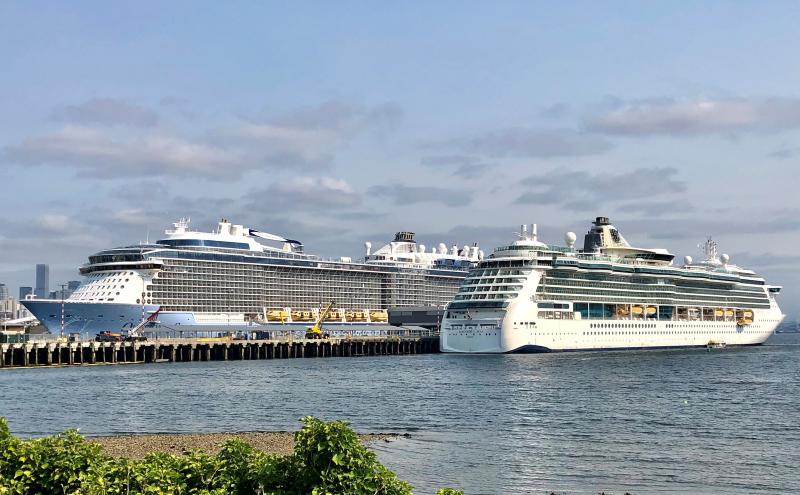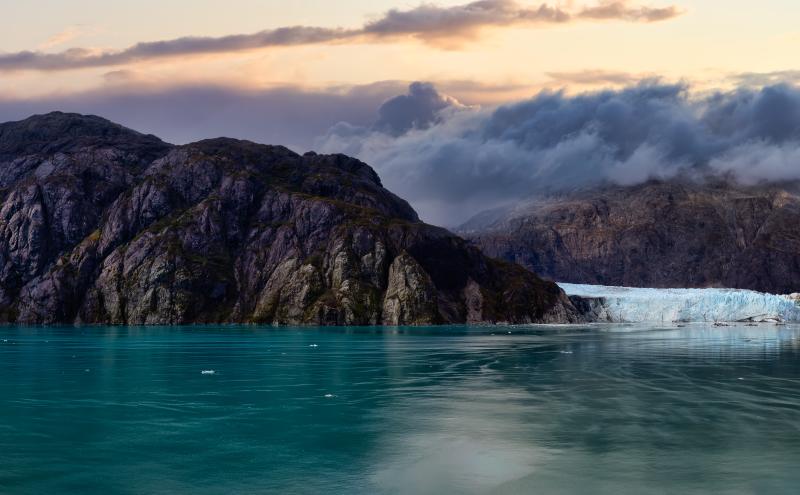
After two years of dramatic change, the 2022 cruise season is shaping up as one of our most active and innovative seasons ever. This reflects the strategy the Port continues to follow to ensure that cruise contributes to an equitable economic recovery and makes continual advancements in sustainability.
We are off to a strong start with this year’s cruise season. So far, 83 sailings have brought 173,000 revenue passengers (approximately 86,000 people) through Bell Street Cruise Terminal at Pier 66 and Smith Cove Cruise Terminal at Pier 91. This year, we are expecting 1.29 million revenue passengers, an increase over the pre-pandemic record level of 1.2 million in 2019.
To make the most of their visit to Seattle, about one out of 4 passengers take advantage of Port Valet, which allows passengers flying out of Seattle-Tacoma International Airport (SEA) to check their luggage and receive their boarding pass onboard the ship before disembarkation. The innovative Port Valet program makes it easy for cruise passengers to explore the city luggage-free and makes airport operations more efficient.
Economic impact
Seattle’s status as a home port is a key factor in our ability to generate economic activity. Being a home port means that visitors begin and end their cruise in Seattle, often spending a day or more in our region before or after their trip. The eight hours it takes for the prior cruise passengers to disembark and the new passengers to embark the ship gives cruise lines time to load up food, beverages, fuel, and supplies for a seven-day sail and for cruise employees to do their personal shopping.
Visitor spending before and after a cruise, employee spending on home port days, and maritime services and provisioning all bring significant economic benefit to our region. In 2019, each home port visit was estimated to provide $4.2 million in economic activity to the region.
More innovative aspects to our operations come from our commitment to an equitable recovery. This year the Port invited cruise lines to join several job fairs; one focused on immigrant community employment and another at our Duwamish Valley community hub to ensure that cruise season jobs are open to all in our community. The Port also promoted hiring fairs sponsored by cruise terminal employers at Pier 91. Expanding job opportunities in cruise to more communities around the region is a core part of our equitable recovery strategy. Later this summer, Port high school interns will have an opportunity to see the industry at work during a cruise experience focused on the business and the career opportunities it offers.
We are also looking at more strategies to increase economic engagement with a stronger equity lens. In the past we hosted events to introduce cruise and tourism sales teams to the local vendors here in our region. With the return of in-person events we are working with economic development and business leaders on strategies that connect more local businesses — particularly women- and minority-owned businesses and small business owners — to cruise industry opportunities. Look for more news later this fall.
Sustainability
This year is also shaping up to be one of our most environmentally innovative. The Port of Seattle is already one of the most environmentally progressive cruise home ports in North America, routinely setting new standards that go beyond regulatory compliance to reduce environmental impact. Beyond compliance, the Port works closely with the cruise industry to minimize climate change and air quality impacts from cruise ship operations through use of cleaner fuels, access to shore power, and a strong collaborative relationship focused on the environment.
This spring the Port played a leading role in bringing together ports from British Columbia and Alaska, as well as cruise lines, the leading global cruise trade association, and decarbonization experts to explore the creation of a cruise-led Green Corridor from Washington to Alaska. We’re happy to announce that the cities of Juneau, Sitka, Skagway, Vancouver, BC and Victoria, BC have signed on as First Movers in this innovative collaboration. We convened members at a kick-off meeting this week and now begin developing a charter and work plan.
We continue to lead on shore power to reduce greenhouse gas emissions. Our goal is to have 100 % percent of home port cruise ships in Seattle equipped with shore power capability and connected to green power on every call by 2030 or sooner. Today, the Port has begun to incorporate requirements into existing agreements to require shore power-capable ships to plug in. Seattle’s cruise lines continue to show their support for clean air and climate action by increasing the number of vessels that are shore power-capable and connect when at berth. This year, 100% of Holland America Line and Princess Cruises ships calling at Pier 91 are shore power-capable.
The Port is also working with cruise lines to ensure water quality protections for Puget Sound. While in 2018 Puget Sound officially became a ‘No Discharge Zone,’ cruise lines stopped discharging wastewater voluntarily years before the state of Washington extended these protections to all vessels. In 2020, the Port also banned all exhaust gas cleaning system wash water from cruise ships at berth and in 2021, all ships calling on the Port voluntarily agreed to pause all discharges of wash water in Puget Sound. This wash water pause will remain in effect until findings from a third-party research study can show whether wash water discharges impact Puget Sound water quality. Until that time, cruise ships do not discharge anything into Puget Sound waters. The Port begins that analysis this year.
Health and safety
Together we are working to make our 2022 season as safe and productive as possible.
In case you missed it, KIRO TV did a great story last month that highlighted how all of our partner agencies and organizations work together during the cruise season.
The Port of Seattle could not move all of these passengers through our terminals and berth all of these ships without our committed partners — everyone from the cruise lines, the U.S. Coast Guard, Customs and Border Protection, our terminal operator Cruise Terminals of America, the International Longshore & Warehouse Union Local 19, local health agencies, transportation partners and SEA Airport operations and airline partners — all working together to ensure seamless and safe operations every season.










